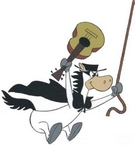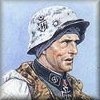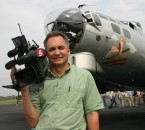Nikademus
Posts: 25684
Joined: 5/27/2000
From: Alien spacecraft
Status: offline

|
well if nothing else, this thread allows me to utilize my dogearred neglected copy of Bergerud's lesser well known 'Touched with Fire'.
USMC's 1st two divisions were only authorized in 1941, with the 2nd mostly a paper org till late 1942. By the time of PH the USMC in totum consituted 70,000 men (including 10,000 in the air units), expanded from an org of 19,000 in 1939. They were, as mentioned, miserably equipped initially, the inter-service rivalries hindering development, right down to the Navy refusing to utlize Army expertise in rapid expansion.
1st USMC div, did however benefit from having 7th Marine regiment in it's org, which was considered the most experienced unit. As mentioned, the "Old Breed" career soliders were a vital stiffening agent for the green drafts that were brought in as the USMC expanded. Overall however, as quoted in Bergerud, "In early 42, the Marines were small, badly equipped, inappropriately deployed, and in organizational chaos." There was no evidence that Basic Training was any tougher than in other services, 12 weeks initially, later reduced to 8 weeks. Like other US services, initial training in the early days was shockingly deficient.
On the plus side however, the Marine veterans contributed some splendid officers to the war effort, the senior leaders being highlighted by Bergerud as unusually good tacticians. The younger 'veterans' were fit enough to serve as a good cadre of junior officers and senior NCO's. Through their efforts they did much to make their young charges competent soldiers. While more aggressive in comparison to the US Army, they were far more restrained in comparison to the Japanese who's banzai type tactics were viewed as overly flashy and (my favorite term), "Tactically dramatic" USMC tactics were more metholodical in comparison if determined/aggressive. US army was more willing to break off and blow the crap out of a tough nut. As in the case of all generalizations, one must take a grain of salt. For example the USMC found offensive ops on Lunga just as difficult to pull off as the Japanese. Defensive battle where heavy firepower could be brought in made things easier. When Army units joined them, grudging respect was bestowed on them when the Army grunts proved that they too were up to the task. The initial landing itself (WATCHTOWER) was a clusterf* and as Richard Frank commented, was just as well that it was unopposed. One learns by doing. Theory is all fine but it takes actual exp to refine such a difficult type of warfare. 1942/early 43 was the lab. 1944 would benefit from what was gleaned.
_____________________________
|
 Printable Version
Printable Version





















 New Messages
New Messages No New Messages
No New Messages Hot Topic w/ New Messages
Hot Topic w/ New Messages Hot Topic w/o New Messages
Hot Topic w/o New Messages Locked w/ New Messages
Locked w/ New Messages Locked w/o New Messages
Locked w/o New Messages Post New Thread
Post New Thread